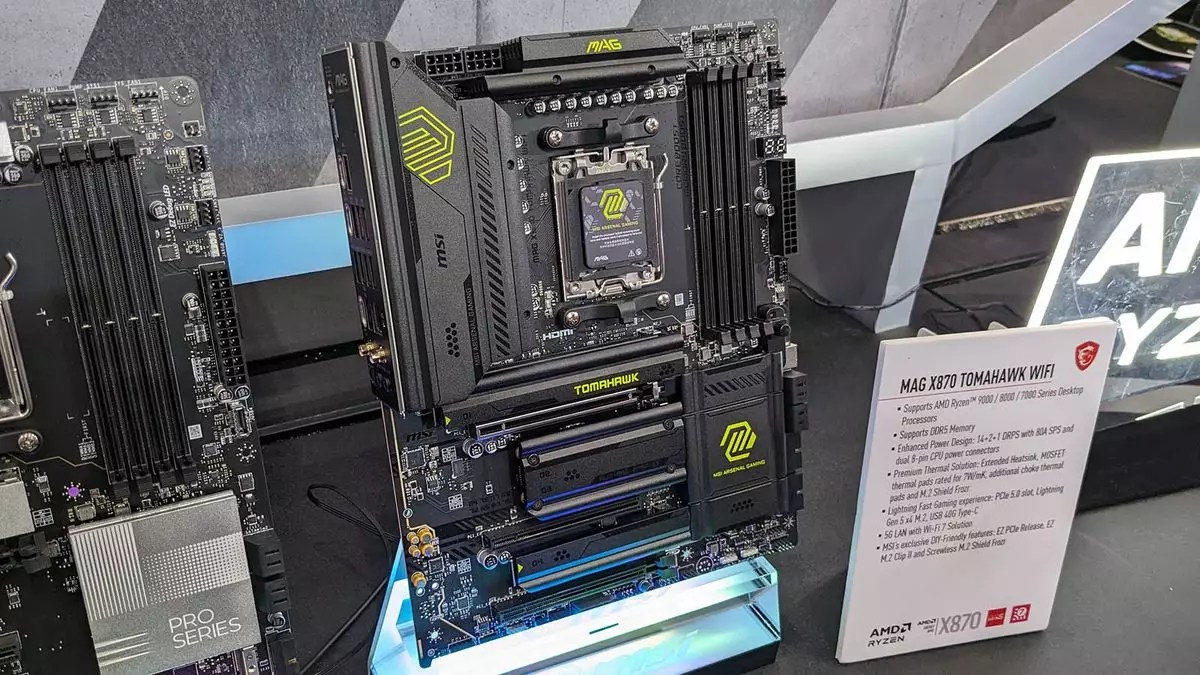Recently, MSI showcased its latest X870 and X870E motherboard series at Gamescom 2024, revealing an interesting addition to these boards. Cowcotland’s visit to MSI’s booth highlighted the presence of an 8-pin PCIe power connector positioned at the bottom of the motherboards. This feature sparked curiosity among tech enthusiasts about its purpose and implications for future graphics card requirements.
The inclusion of the 8-pin PCIe power connector in MSI’s new motherboards is a strategic move to cater to the power demands of upcoming Nvidia and AMD graphics cards. With reports suggesting that these next-generation GPUs are likely to consume significant amounts of power, the necessity for additional power connectors becomes apparent. This foresight indicates that MSI is preparing to meet the advanced power requirements of flagship-tier graphics cards that are expected to be released in the near future.
Traditionally, motherboards come equipped with a PCIe x16 slot capable of providing up to 75W of power. By integrating an extra 150W through an 8-pin connector, the total power delivery from the motherboard increases to 225W. Moreover, the possibility of connecting a 12V-2×6 or 12VHPWR connector, capable of delivering up to 600W, suggests a total power output of 800W or more. While this level of power allocation may be primarily targeted at flagship GPUs like the RTX 5090, the added benefit of supporting multiple graphics cards for diverse workloads enhances the motherboard’s versatility.
The escalating power consumption and thermal design power (TDP) of top-tier graphics cards, such as the RTX 4090 with a power draw of up to 450W, indicate a growing trend in power requirements. MSI’s decision to incorporate 8-pin connectors across its motherboard range demonstrates a proactive approach to potential power challenges posed by future GPUs. Although some manufacturers have yet to adopt this trend, enthusiast-focused boards like the Asus Crosshair X870E Hero have embraced the additional power connector, suggesting a shift towards accommodating higher power demands in the industry.
As Intel’s Z890 boards are set to be unveiled in the coming weeks, the inclusion of additional power connectors on motherboards is likely to become a prominent feature in the market. The necessity for robust power delivery solutions to support the evolving demands of modern GPUs underscores the importance of forward-thinking design and engineering in motherboard development. The emergence of next-generation graphics cards that push the boundaries of power consumption will compel motherboard manufacturers to innovate and adapt to meet the evolving needs of PC enthusiasts and professionals alike.


Leave a Reply